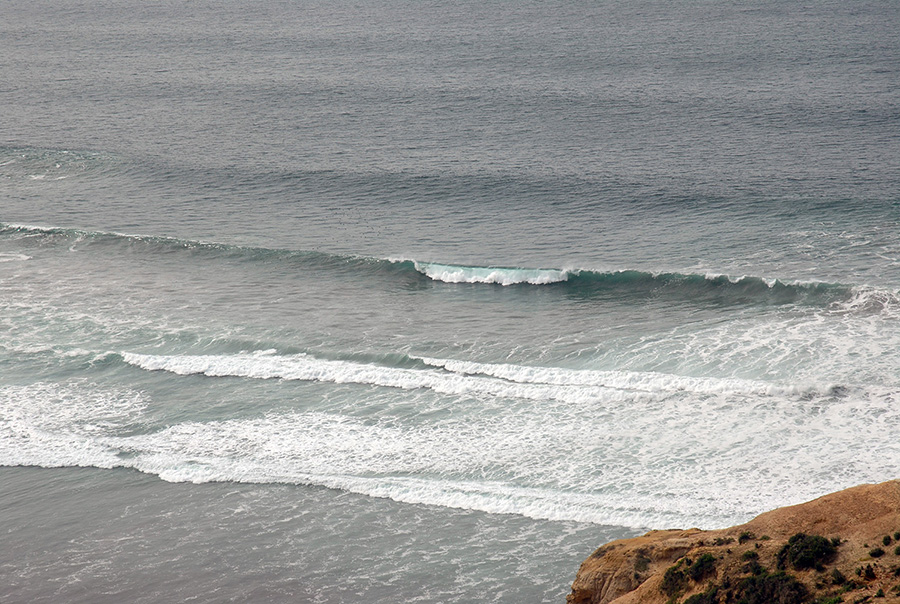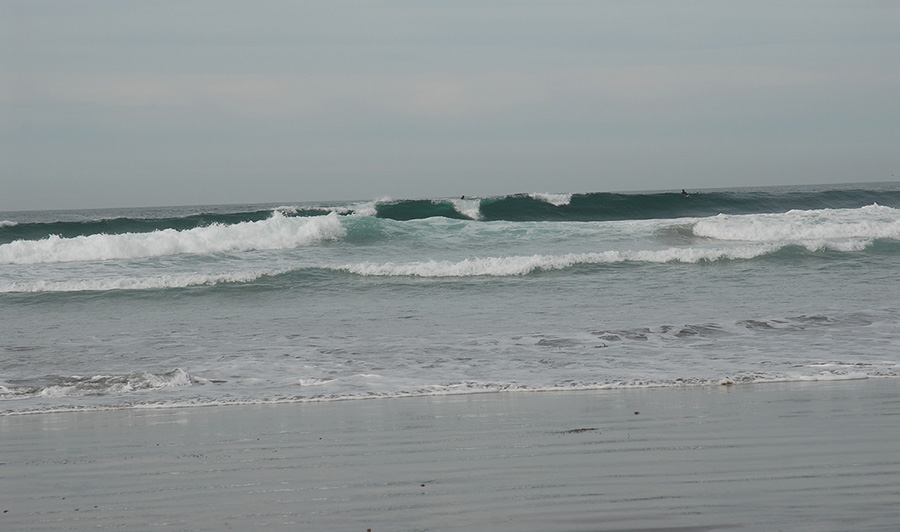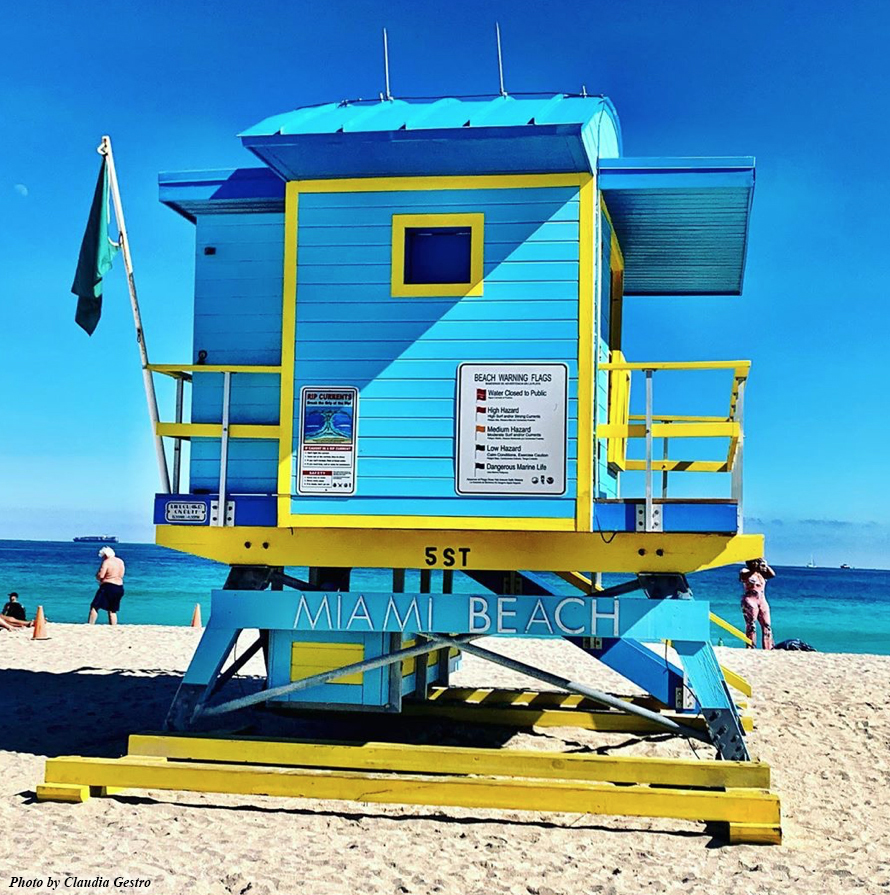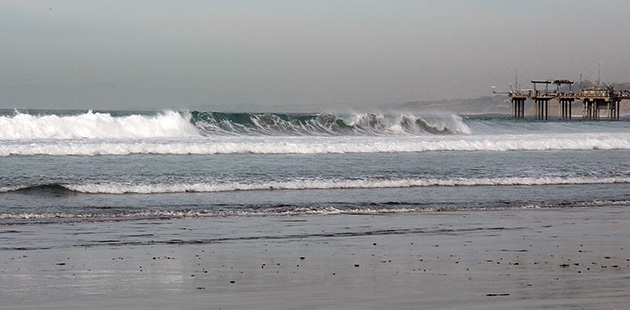We Need Action Now to Fight the Climate Crisis
Here I am, about a week after celebrating my 36th birthday (for the 31st time), grateful to still be breathing — and more than 38 years clean and sober — and I have to ask myself: What has my generation done — what have I done — to make this planet a better place for the younger generations and the generations to come? Apparently not much.
I just heard this on the TV news: Extreme weather, exacerbated by the climate crisis, cost the U.S. $165 billion in 2022. And the cost of severe weather worsened by the climate crisis over the past five years has cost the United States at least $100 billion per year. *More on that later.
Dr. Rick Spinrad, the administrator for the National Oceanic and Atmospheric Administration (NOAA), told Oregon Public Broadcasting (OPB) reporter Nathan Rott. “Climate change is creating more and more intense, extreme events that cause significant damage and often sets off cascading hazards like intense drought, followed by devastating wildfires, followed by dangerous flooding and mudslides.”
And I always look back at my days with the Crazy Shepherd — 40 effin’ years ago — when some of the writers were warning us of the coming climate crisis. But I digress.
NOAA has been telling us this for as long as I can remember, going back to the days before former V.P. Al Gore was promoting his movie, An Inconvenient Truth, which was released in 2006, a year after Hurricane Katrina devastated New Orleans.
There were the numerous detractors who tried to make Gore a joke, pointing out that the former VEEP traveled around the world in jets. Scientists bought and paid for by the fossil fuel industry didn’t refute the data 97% of scientists and researchers said was incontrovertible truth, but the fossil fuel scientists claimed the science of global warming was “unsettled.” There is even a book titled Unsettled: What Climate Science Tells Us, What it Doesn’t and Why It Matters.
Years ago I spoke with a scientist from the Scripps Institution of Oceanography about the changes in upwelling that alter the local weather patterns. It explains why we were getting very chilly weather in the middle of July. I also looked up sea level rise. This is the start from a November 2022 report by NASA, Jet Propulsion Laboratory: “New results show average sea level rise approaching the 1-foot mark for most coastlines of the contiguous U.S. by 2050. The Gulf Coast and Southeast will see the most change.”

In the study the NASA scientists tell us we need to brace for, “increases in both catastrophic and nuisance flooding in coming years.” They also say, “… multiple lines of evidence indicate the rise is accelerating.”
According to the leader of the JPL’s NASA Sea Level Change Team, Ben Hamlington, “A key takeaway is that sea level rise along the U.S. coast has continued to accelerate over the past three decades.”
Much of what the beginning of that report said I knew to some extent. Scientists involved with global warming — excuse me, “climate change” — have been saying sea level rise was accelerating. This report says the rising oceans have been accelerating for three decades.
Exacerbating the sea level rise is that right now the planet is being affected by a “… wobble in the Moon’s orbit.” What?
It happens every 18.6 years and in this lunar cycle the wobbling Moon, along with the accelerating sea level rise, “… is projected to worsen the impacts of high-tide flooding during the 2030s and 2040s.”
Well, I’m not sure how many more years I’ll be alive, but the effects of the Moon wobble and rising sea levels on the West Coast of the United States, in particular California, are evident now. For the past few weeks the Golden State has been getting pummeled by huge storms that last for days, which has caused catastrophic flooding, mudslides and sinkholes, that were preceded by intense drought, followed by devastating wildfires.
Which brings us back to Dr. Spinrad of NOAA.
In 2021 NASA published a report to explain the high tide flooding around the United States, including Honolulu, Hawaii. It was conducted by the NASA Sea Level Change Science Team from the University of Hawaii. A couple of take-aways from that study: “Starting in the mid-2030s … the alignment of rising sea levels with a lunar cycle will cause coastal cities all around the U.S. to begin a decade of dramatic increases in flood numbers, according to the first study that takes into account all known oceanic and astronomical causes for floods.” Th second take-away: “high tides will exceed known flooding thresholds around the country more often. What’s more, the floods will sometimes occur in clusters lasting a month or longer, depending on the positions of the Moon, Earth, and the Sun.” Read the entire report here.
As I sit here finishing up this post, we here in Southern California are experiencing another rainstorm, from one of those atmospheric rivers we’ve been hearing about lately. And this one is going to last from four-to-five days, depending on the zip code people are living in. Up in the Los Angeles area the rain will last through Monday. In San Diego the rain will last through Tuesday.

The silver lining to all this stormy weather is that it is refilling most of the reservoirs in California. Lake Cachuma in Santa Barbara county is now at 100% capacity. Before the storms it was at 33%. Small comfort if your home was destroyed by a flood or mudslide.
This has been a wet month. We have had flood warnings and evacuations since before Christmas.
All this got me to thinking about the South Florida area, in particular Miami Beach. Some years ago I wrote a piece about sea level rise, including what was happening in Miami Beach. Professor Hal Wanless, who was the Chair of the Department of Geological Studies at the University of Miami, said he expects the sea level to rise around 4-5 feet. Another gentleman, a fishing charter captain by the by the name of Dan Kipnes, said that on sunny days he could see water coming up out of Biscayne Bay, through manholes and flooding the streets of Miami Beach.
More recently a report by the Sea Level Rise Strategy project of Miami-Dade County said they expect the sea to rise “… 10 to 17 inches by 2040 and 21 to 54 inches by 2070 (above the 2000 mean sea level in Key West, Florida).”
I could be alive in 2040, which means I could be knee deep in Biscayne Bay were I traipsing along Venetian Way. Actually most of what we recognize as busy South Florida will be under water, unlivable. Entire neighborhoods will be lost to sea level rise.

Then I think about the coastal areas that have subway systems. Who has a plan for saving them? And what is the point if miles of what had been bustling coastal communities are under water and unlivable? In 1989 I traveled from Milwaukee, Wisconsin to tour the Southwest with my older brother. I spent a few days in San Francisco and Oakland to see the Grateful Dead on New Year’s Eve. I used the BART to get from my hotel in San Francisco to the Oakland Coliseum and the buses and trolleys to get around San Francisco. What will become of the BART when low lying streets are flooded on a daily basis? Mission Beach in San Diego has had flooded streets on and off the last ten days.
At this point it is really not a “maybe it will happen.” It is most definitely happening now. This tweet was sent out by Santa Cruz County, California today (Saturday January 14).
Evacuations underway along Holohan/East Lake/College. PAJ-E015, E024, E026, E027, E028. Please leave now. https://t.co/Ng3MTJFp7E
— Santa Cruz County (@sccounty) January 14, 2023
Evacuations, and it isn’t just Santa Crux. All up and down the California coast it is happening. We have run out of time. We need to aggressively attack the climate crisis and at least slow it down. The science is settled, we are hitting and passing tipping points. It’s time for action.
*How on Earth can anyone complain about the money we use to fight the climate crisis? The cost of doing nothing will get worse exponentially. The best time to get smart about global warming was 40 years ago. The second best time is today.
On the bright side: About40 years ago we, along with the rest of the world, took steps to remove chlorofluorocarbons (CFCs) from our lives to fix the hole in the ozone layer. It wasn’t going to have any short-term effects, but now we see the hole in the ozone is shrinking. We have proven to ourselves we can change the way we live to help our planet. It’s time to do it again.

Tim Forkes started as a writer on a small alternative newspaper in Milwaukee called the Crazy Shepherd. Writing about entertainment, he had the opportunity to speak with many people in show business, from the very famous to the people struggling to find an audience. In 1992 Tim moved to San Diego, CA and pursued other interests, but remained a freelance writer. Upon arrival in Southern California he was struck by how the elected government officials and business were so intertwined, far more so than he had witnessed in Wisconsin. His interest in entertainment began to wane and the business of politics took its place. He had always been interested in politics, his mother had been a Democratic Party official in Milwaukee, WI, so he sat down to dinner with many of Wisconsin’s greatest political names of the 20th Century: William Proxmire and Clem Zablocki chief among them. As a Marine Corps veteran, Tim has a great interest in veteran affairs, primarily as they relate to the men and women serving and their families. As far as Tim is concerned, the military-industrial complex has enough support. How the men and women who serve are treated is reprehensible, while in the military and especially once they become veterans. Tim would like to help change that.


I am grateful for Tim Forkes adding his voice to the chorus that has sounded the climate change alarm for decades. He mentioned Katrina. Down in New Orleans we certainly have experienced our share of the accelerated changes that we humans have not prepared for and yet we keep stoking the fire. Of course, in 2005, studies have shown that flooding resulted mostly from the Corps of Engineers’ poorly constructed levees.
But even with this information, I also wonder if the Gulf Coast will be livable in 10 or 20 years as hurricanes and heat increase, and I weep for those in California facing the long road to recovery, wondering “what the heck am I going to do?. “
Absolutely. So much of the Gulf Coast is altered — ruined — by greed and the rapacious appetite for fossil fuels. It’s the same all over the USA and the world.
What the heck are we doing?